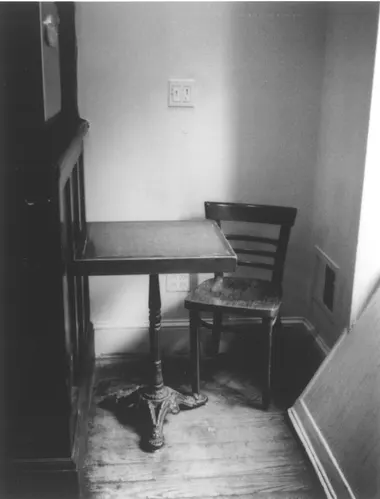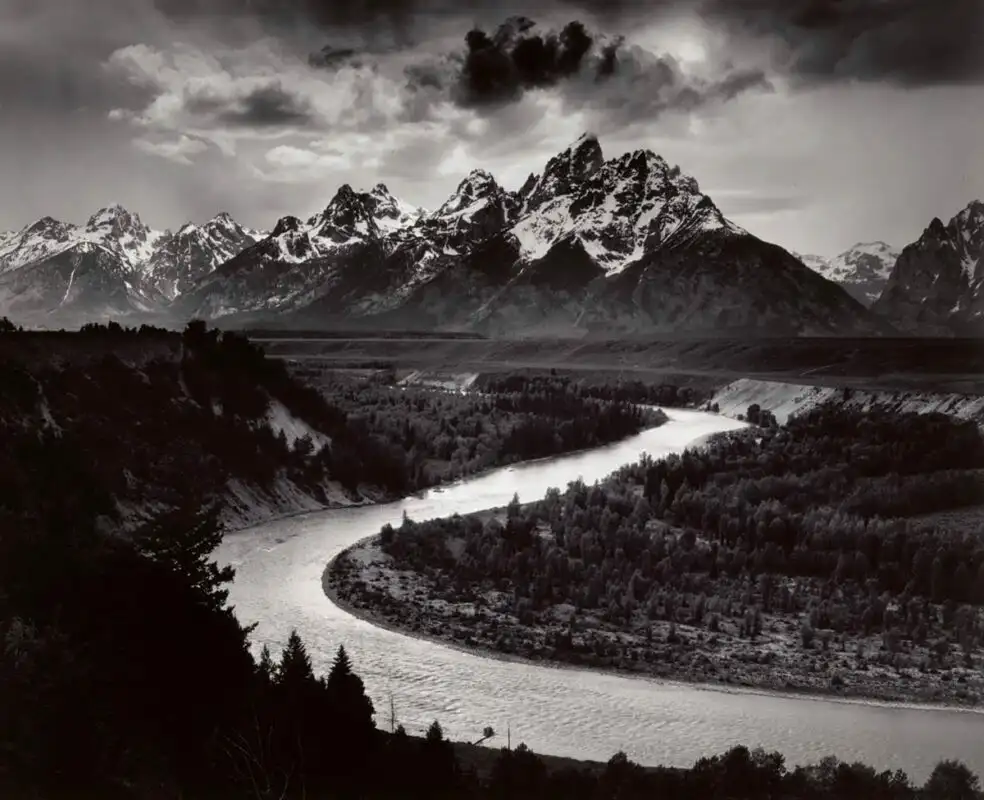Report
“Photography, as a powerful medium of expression and communications, offers an infinite variety of perception, interpretation and execution.”
Ansel Adams (Date: Unknown)
Photography is interpreted in different ways by the viewer depending on their experiences in life. This project named ‘Evolving’ is a continuation of a previous long term project based on experiences of domestic abuse and how far my life has changed. It is a reflection of my life through art. As an abstract photographer, I wanted to illustrate this concept of personal evolution by considering the difficulties faced by people of the distant past. The project therefore is not only about personal evolution but also the evolution of mankind and how they coped with adversity in their lives. The idea first came to me during a retreat taken last summer wherein I lived with a sustainable, off-the-grid community, with the intention of learning more about myself. The minimalist lifestyle gave the opportunity to strip everything back, with no communication with the outside world and no television. The experience was based more upon meditation and re-evaluation of self. It was a short lived experience but it highlighted how complex our normal everyday lives are, complicated by technology and the demands of work and life.
The lives of our ancestors can be seen through marks in the landscape such as stone circles but also through what we understand about their lives, their beliefs and their forms of communication. Their communication would have come in the form of craft – crafting artwork and stone formations. Their legacy has been left behind for us, their ancestors, and has been seen and appreciated by generations. Stone circles and other neolithic landmarks have been interpreted in many different ways but essentially, they represent survival and overcoming difficulties. I wanted to conceptualise my own life by thinking about how lives were lived without all of the conveniences and luxuries of the modern day. This quotation from Robert Adams brings together this thought process, “The point of art has never been to make something synonymous with life … but to make something of reduced complexity that is nonetheless analogous to life and that can thereby clarify it” (Adams, 1996, cited in Wells, 2011).
Upon learning about the beliefs and understandings regarding stone circles, (Pearson, 2013) it became clear that the sun played a huge part in the lives of Neolithic people. My photography would include using natural light and shadow around the structures and to feature the sun in the form of sunrises and sunsets wherever possible. Much of the research for this project was conducted via fieldwork and visiting numerous neolithic sites.
The work of photographer Anne Brigman (1869-1950) has played a significant part in the development of this project. Her work has been described as having an “aura of sensuality and mystery” (Deskins, 2019). During Brigman’s own life, she had to find ways of adapting and evolving due to her personal circumstances. This was expressed through her love of art. I felt a deep connection with this photographer, wanting to create an atmosphere of mystery in my own photographs. Brigman was not frightened of using her art to express who she was in both photography and poetry. In photography, her love of nature and the human form of nudity showed she was not scared of expressing her true self. Not all of Brigman’s photographs are clear: some are blurry and she did not claim to be the greatest artist.
In her poetry, the use of language is encapsulating and draws you into her world. The words that she used were very descriptive and through her poetry you can grasp how it must have been, living her life when she did, as someone who knew who she wanted to be. Her poetry became the main focus of her life later in her career and reflected her strong emotional response to grief, loss and ageing (Lanzendorfer, 2019).
It would seem that photography and poetry clearly had a huge impact on what Bridgman wanted to achieve as an artist and was clearly important to her. Brigman’s photography combines use of light and dark very effectively. It is this aspect of her work that influenced my own the most. It reflects my first domestic violence project ‘Out of the Darkness, Into the Light’. This is most visible in my photographs of the site at Redcliff which integrates ‘god lines’ and the sun, which insists that the viewer must focus beyond the foreground. It would be detrimental to remove the shadows from the images as it would have reduced the impact of the atmosphere I was trying to create. I purposely tried to capture shadowing by selecting angles that drew attention to it and kept the sunlight or moonlight behind the neolithic structures. The images are as natural as possible: evolution is about nature, and growing and changing naturally.
During the research, I have come to feel that I have a spiritual connection with Anne Brigman. In her work, Brigman doesn’t seem to have any constraints. The images are not perfect and her life was not perfect, neither was her poetry, but she had a vision and she knew that she wanted to give a particular impression.

In comparison to Brigman, Patti Smith, an artist in her own right, decided to catalogue her journey documentary-style. She claims, “I don’t consider myself a photographer,” she said. “I take lots of photographs; it’s a part of my life…. But I think of myself as an amateur. There’s nothing wrong with being an amateur.”(Sayej, 2016).
Smith would also continue to say, “Sometimes [people] will say my photos are blurry, they’re out of focus or they’re too soft focus,” said Smith. “My pictures look exactly like I want them to look. I’m not trying to change the world with photography; I’m just taking photographs I think have a certain amount of beauty.” (Sayej, 2016).
Ann Brigman and Patti Smith are both artists and poets in their own right. It would seem that Smith took photographs for the purpose of documenting her own life and experiences. She is using her photographs as memories and as a way of seeing those she has lost within her photographs. These two women are using their artwork to continue the legacy of others. This connects with my own project by cataloguing it the same way as these two artists have. Personally, I would hope that these neolithic sites I have photographed would be protected in the future. Unfortunately when you look at places like Stonehenge and how people are trying to change the landscape and you do not know what the future holds – things may be moved or changed.

Ansel Adams (1902-1984) has also been important to this work. Predominantly he is a landscape photographer who also uses shadow and natural light very effectively. I appreciate the way he uses natural light in a similar way to Anne Brigman, although their work is very different. This consideration of light and shadow made me rethink whether this project needed to focus only on the physical landmarks of Neolithic people or whether it could also focus on those things, such as the sun and light, which would have been very important to Neolithic people. These artists’ work has also made me consider whether black and white or colour would be more effective in my own photographs.
When considering Robert Macfarlane in his book The Old Ways (2013) he talks about walking and how walking ancient paths can create a connection between the present and the past. Talking about the experience of walking alongside the footprints at Formby Point, north of Liverpool: “To track these tracks, to leave your own prints beside them, is to sense nothing so simple as time travel, a sudden whisking back to the Mesolithic. No, the uncanniness of the experience involves a feeling of co-presence: the prehistoric and the present matching up such that it is unclear who walks in whose tracks” (p.362). I had a similar experience while working on the archaeological dig, which made me realise how far we have evolved. When visiting other neolithic sites and looking at how the modern human has evolved in terms of technology, I appreciated what I have but also understood how hard it must have been for them. Our ancestors had limited resources but found a way to create amazing structures within our landscape.
Macfarlane’s work led me to the work of archaeologist Christopher Tilley, who believed that “we need first to understand the importance of the ancient paths that link and bypass them” (Macfarlane, 2012, p.291). This led me to re-envision my work as depicting journeys and connecting them from the past to the present. Every journey has its ups and downs and over time, while journeying, everything would have evolved. Our modern approach and modern journeys are very different to those of Neolithic people, but by visiting these sites they left behind on their journeys we can wonder more at the difficulties they would have faced in creating these constructs from tools they made from their own surroundings. It helps us to understand how clever they must have been, and how lazy we are in the modern world. Visiting and photographing these sites allows us to go some way to walking in their footprints and understanding that their creations could be seen as a type of miracle.
Macfarlane also draws together the connection between literature and poetry, and landscape. This connects back to Anne Brigman, who was both a photographer and a poet whose work was influenced by the landscape around her. To look at a photograph is visual, but I want my images to be able to be translated into words, in the same way Brigman was able to describe her works through poetry. When Brigman created her photographs, you wonder whether she created the poetry or the images first. However, I would like to be able to take my images and turn them into poetry, another passion of mine too.This also made me consider the idea of imagination and the imagination that was necessary on the part of the Neolithic people to create the constructs that this project focuses on.
This project is barely touching the surface of where I would like it to go in the future. I want to be able to expand on the project and to go into the different aspects of it. Where originally it was stone circles and ancient burial grounds when evolution happens a journey takes place from what was to what it could be. I would like to be able to do what Anne Brigman did and incorporate poetry and there must be something in it because Macfarlane seemed to be inspired in the same type of way by literature connecting to the landscape. Poetry does not need to be romantic and neither do the photographs, but if there is a meaning behind it and you are connecting with the audience, you are giving the audience an emotional connection through the use of words, instead of visual photographs:
Now, though I have not you, I have the sea
With its strange beauty and its lonely wastes …
Yet, when the moonrise and the sunsets come
I long to share … like sacramental bread and wine.
(Brigman, cited in Lanzendorfer, 2019)

